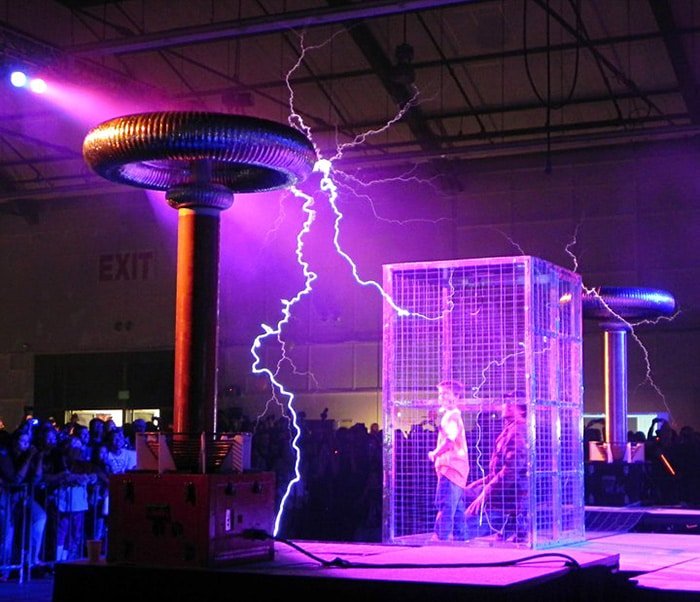Constructing The Own Faraday Cage: The DIY Guide
An increasingly connected world has turned the safeguarding of our electronic devices become the priority for many individuals. The reasons may vary, including privacy concerns, the dangers posed by electromagnetic pulses, or simply a desire to keep gadgets safe from harm, understanding Faraday cages can be crucial. These fascinating structures serve as a barrier against electromagnetic fields, allowing you to protect your sensitive electronics from various threats. Building your own Faraday cage not only offers the practical solution but also enables you to customize it to suit your specific needs.
Constructing a Faraday cage may sound complex, but with the right knowledge and materials, anyone can begin this DIY project. In this guide, we will explore the important features, materials, and considerations necessary for creating an effective Faraday cage. Starting with understanding how these cages work to choosing the ideal size and type, you will gain a deeper understanding of all aspects of this innovative protective technology. So, whether you're preparing for an emergency or just wish to shield your personal devices, let’s dive into the world of Faraday cages and discover how you can make your own.
Key Features of Faraday Cages
When choosing a Faraday cage, a key aspect to evaluate is the material used in its construction. The effectiveness of a Faraday cage is heavily influenced by the specific metal used, as different metals present distinct levels of conductivity and shield against electromagnetic interference. Copper and aluminum rank high as options, known for excellent conductivity and capability to shield from a wide range of electromagnetic frequencies. Make sure that the chosen material is thick enough to provide adequate shielding from external signals while being practical in weight.
Another important feature is the design of the cage itself. The effectiveness of a Faraday cage is also influenced by its shape and whether it is a solid structure or a mesh design. Solid designs usually offer superior shielding, but mesh cages can be more versatile and lighter, which aids in easy transport. portable Faraday cages for electronics must bear in mind that the size of openings in mesh designs should be proportionally small to the wavelengths of the signals being blocked, as greater openings may diminish its protective capabilities.
Finally, grounding plays a vital role in maximizing the performance of a Faraday cage. While many cages can operate well without grounding, proper grounding can improve signal protection by creating a pathway for electrical currents to move away from sensitive electronics. Such grounding can help avert possible harm during electromagnetic pulses or lightning strikes, which renders it a critical component for top-notch protection.
Material Considerations
When building your Faraday cage, the selection of components is critical for guaranteeing its effectiveness. Metals such as copper wire, aluminium, and iron are often recommended due to their excellent ability to conduct electricity and protective qualities. Copper metal is highly effective but can be costlier, while aluminium metal offers a compromise between cost and effectiveness. Steel, while weightier and less efficient, is still a viable option for those looking for durability and strength in their structure. Recognizing the types of electromagnetic waves you want to block will help in choosing the best material.
Size is another important factor to consider. The measurements of your Faraday cage should accommodate not only the items you intend to shield, but also allow for some additional space to avoid cramping. An overly cramped design can lead to inadequate shielding, as the efficacy of a shield diminishes with too little space between items. Think about both the size of the devices and any additional accessories you might want to keep within the cage, and make sure to consider practicality in everyday use.
Finally, mobility is an aspect of dimensions that shouldn't be overlooked. If you plan to relocate your Faraday cage regularly, a compact, lightweight option might be more appropriate. Conversely, if portable Faraday cages for electronics is intended for fixed placement at home or in an office, you can afford to choose a larger, more robust design. Striking the right equilibrium between dimensions, components, and usability will help guarantee that your Faraday cage meets your needs while offering maximum protection.

Evaluating and Upkeeping Your Faraday Cage
To confirm your Faraday cage is functioning properly, frequent testing is crucial. One simple method is to place a device that is known to receive signals, such as a cell phone or radio, within the cage and seal it. If the device is incapable to detect any signals when the cage is shut, it shows your Faraday cage is effective. Alternatively, if signals come through, you may need to check for cracks, punctures, or poor grounding that could undermine its shielding effectiveness.
Upkeep is necessary to longevity and functionality. Always look over the cage for physical damage, especially if it is faced with constant movement or elements. Ensure that the materials remain intact; this includes checking for oxidation or corrosion in metallic cages. Proper grounding is also important, as it helps dissipate any electromagnetic energy. Make sure the grounding contacts are secure and operating properly.
Finally, cleaning plays a significant role in the upkeep of your Faraday cage. Dust, dirt, and debris can gather and affect the performance of the protection. Regular cleaning with a careful approach will help preserve the integrity of the materials used in your cage. By carrying out these inspections and maintenance tasks regularly, you can maximize the defense your Faraday cage provides against electromagnetic interference.